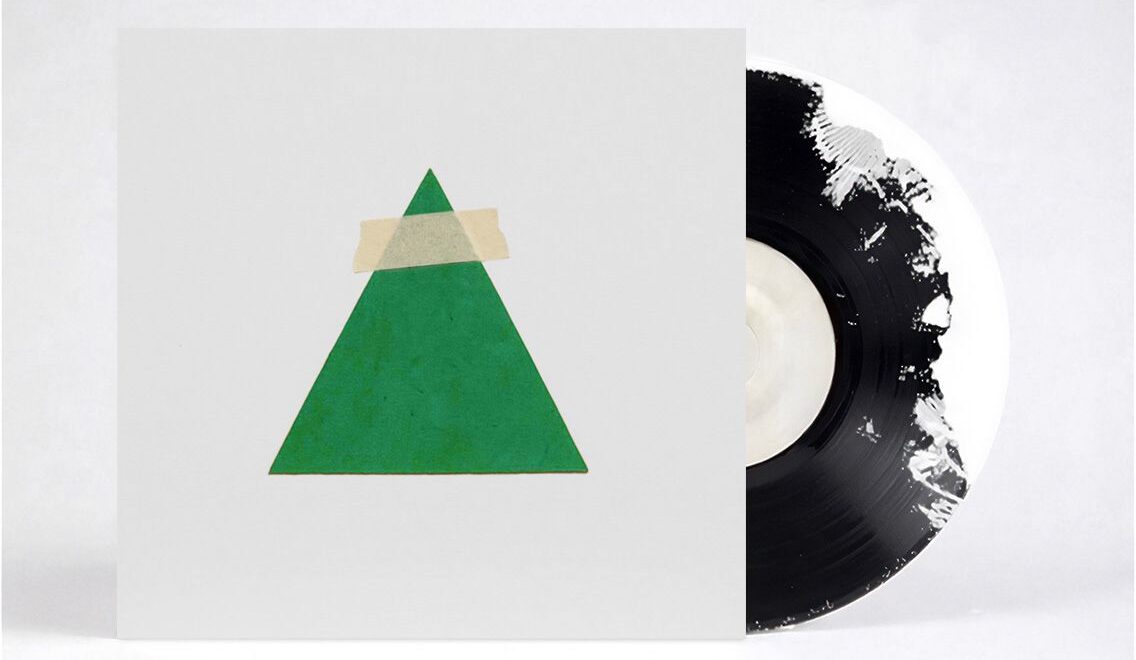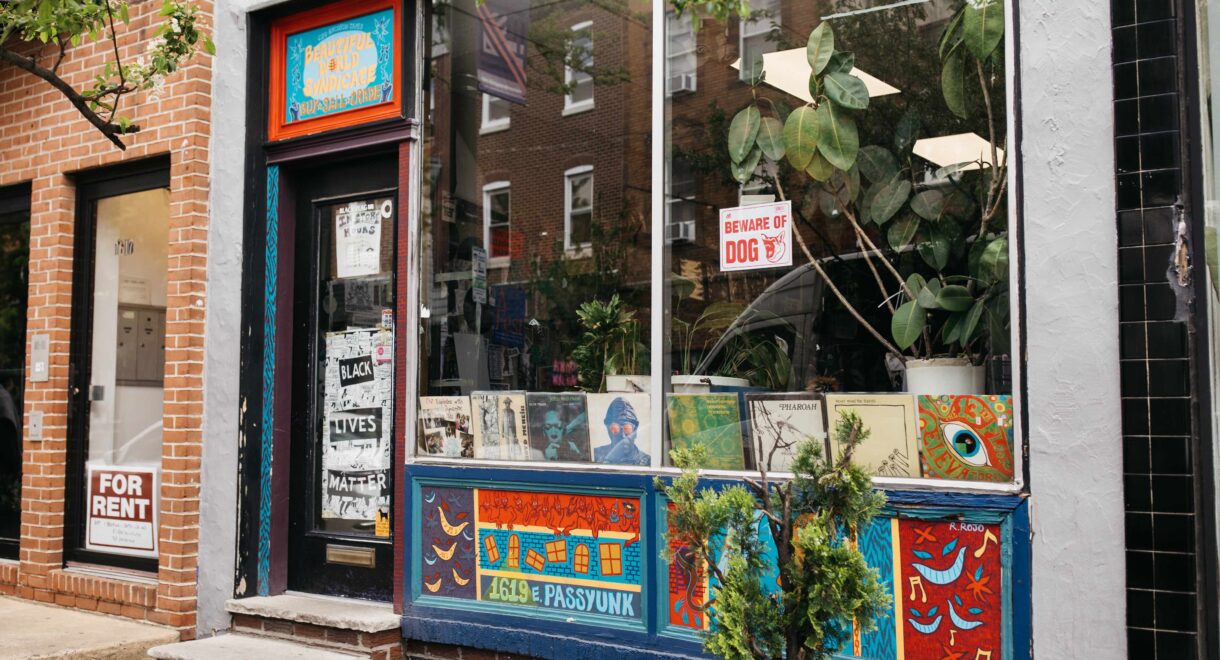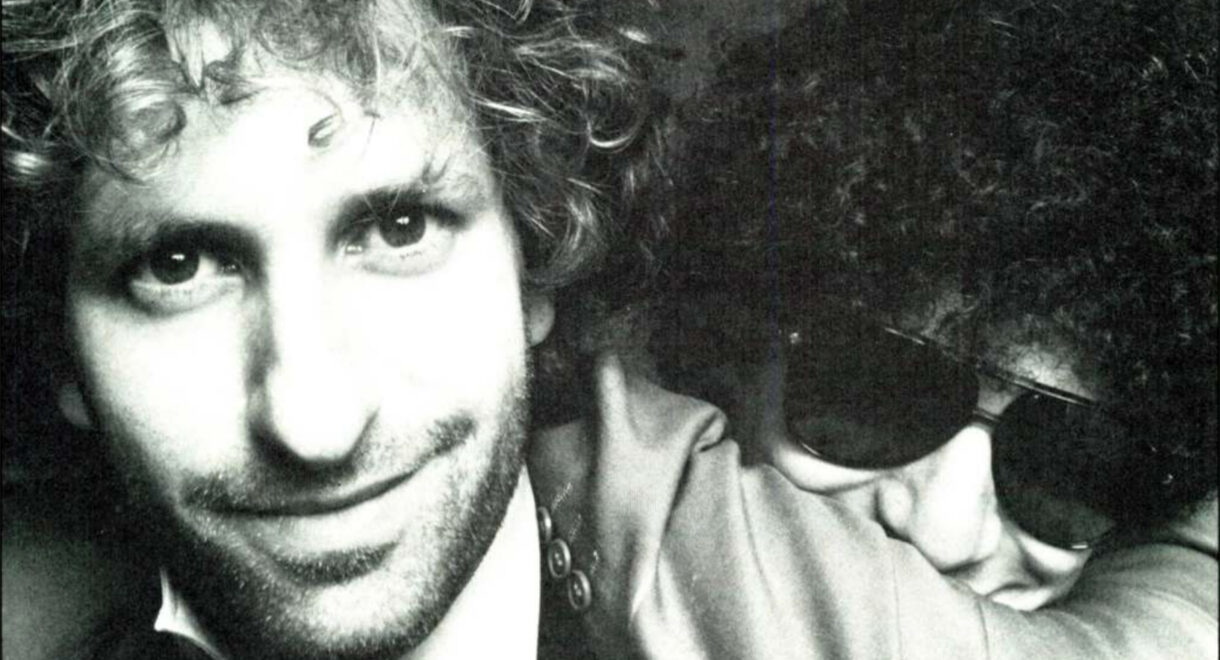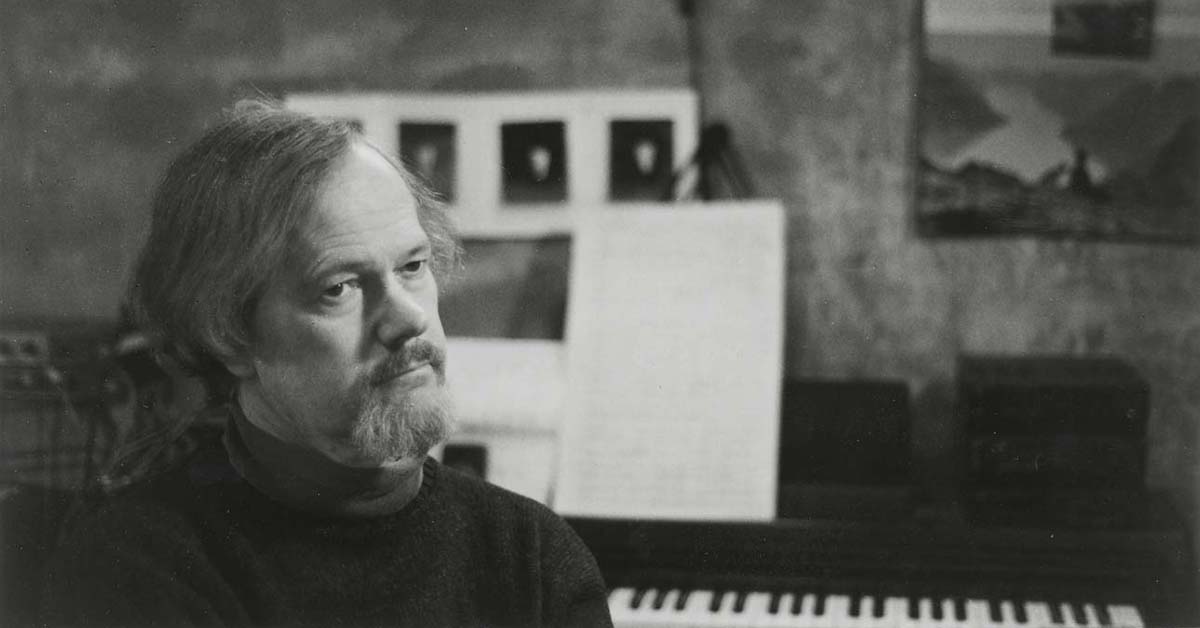Merry cosxmes to all those who celebrate! It’s that time of year again… That’s right — another cosxmes mix has been uploaded! In certain circles, “cosxmes” is the […]
A Full Moon for Terry Riley: Gyan Riley’s new transcription of ‘A Rainbow in Curved Air’ to make its West Coast debut at the Ford

In a Q&A, Gyan Riley reflects on his father’s 90th, their collaborations, and his own path. Ahead of the Ford show, join ISC and LA Phil Insight for ‘Cosmic-Classical Sounds of Terry Riley’ at JACCC.
Across the street from Gyan Riley’s home in Joshua Tree sits the Lou Harrison House, a hand-built structure of hay bales and plaster, designed in the 1980s by the composer as both dwelling and instrument. Its thick walls trap silence, its vaulted ceilings turn a single voice into something luminous. For Riley, the guitarist and composer who has made a life in the high desert, the late Harrison’s house is more than a landmark — it’s sacred ground. He’s recorded inside, composed inside, and felt its uncanny acoustics push him toward unexpected discoveries.
I know that feeling myself, having spent time at the Harrison House courtesy of its caretaker, Eva Soltes — a mutual friend of Riley’s — and later returned for a weekend that sealed what became my marriage. The place carries that kind of magic: its walls built from the land, its aura part instrument, part sanctuary.

That resonance follows Riley to Los Angeles on September 7, where he joins Bang on a Can All-Stars and an expanded ensemble at the Ford Amphitheater to celebrate the 90th birthday of his father, Terry Riley. Together they’ll perform In C— called “musical democracy at its highest level” by the Library of Congress — and a new transcription of A Rainbow in Curved Air that Gyan has prepared. It will be the West Coast premiere of Curved Air. Join the LA Phil early that evening — the first 500 people through the gate will receive a limited-edition concert poster by ISC’s Radha V.
Presented by the LA Phil, the event will gather not only Bang on a Can but also organist Sarah Davachi, harpist Shelley Burgon, percussionists Tim Feeney and Sidney Hopson, violinist Jeff Gauthier, sitarist Rajib Karmakar, tabla master Salar Nader, tubist William Roper, and saxophonist M.A. Tiesenga. (The New Yorker just published an extended new piece on Terry Riley’s influence.)
Ahead of the Ford show, on September 5th In Sheep’s Clothing partners with LA Phil Insight at JACCC for Cosmic-Classical Sounds of Terry Riley, a listening session in the Japanese Garden tracing the composer’s hypnotic and boundary-breaking catalog.
Tickets are available now: https://jaccc.org/events/a-terry-riley-listening-party/

While best known as Terry Riley’s musical partner and son, Gyan Riley has carved out a restless path of his own. The New Yorker once described him as a “one-man American-music machine,” a tag that fits his work with John Zorn, Julian Lage, and Bill Frisell as easily as his delicate solo compositions. Paul Simon’s a fan: Riley just concluded a tour as Simon’s guitarist. Riley’s recent albums — including the intimate, song-based Winter Sun, his first as a vocalist — show how far he’s pushed past his classical guitar beginnings. For Riley, whether in the sacred acoustics of the Harrison House or under the full moon at the Ford, the work is about finding moments that feel unrepeatable.
The following interview has been edited for length and clarity.
Randall Roberts: Ninety years is a milestone for anyone, but especially for a figure as influential as your father. What goes through your mind as you step on stage for a concert like this, honoring him without him being present?
Gyan Riley: I wouldn’t say it’s that different than any other performance in the sense that when I go on stage, I’m entering a space with the other performers and the audience. We’re all inhabiting that space together and going to do our best to make some kind of unforgettable experience happen, some really special experience that is only going to happen that one time. That’s basically the same no matter where you are performing or who you’re performing with or for. However, this is a really special event, given that it’s his 90th birthday and it’s going to be a full moon, and we’re honoring two beautiful pieces that have been in the world for decades and really moved a lot of people. Even though he can’t be there with us, I’ve been in touch with him a lot over the process of arranging the work. At some stage I was in Japan and played him some early recordings of what I was doing. So I felt like he was a little bit a part of it, even though he wasn’t offering feedback beyond encouragement.
A Rainbow in Curved Air — is this a West Coast premiere?
Yeah. We played it in New York in May, and this will be the West Coast premiere.
Can you talk about preparing and working on that piece, and maybe some of the things you discovered while arranging it?
The main thing is that the piece is really important for a lot of people, and it’s unique. What’s interesting is that the recording is just one realization of many possibilities. It was an edit of several improvisations my dad recorded in the studio, co-edited and produced by David Behrman. When I first started performing it with my dad in duo format, he started playing parts I didn’t recognize. He said it was all Rainbow in Curved Air. That showed me the piece can be realized in many ways.
At first, taking it on was daunting, but then I realized we weren’t one person with synthesizers—we were a band. I know what the players can do, so we could create something completely different, with live improvisation and dynamic moments. That became fun, and it was also fun to think audiences might not recognize some passages — some written by him, some liberties I took as an arranger. It became equally a part of me.
The instrumentation — can you talk about the forces you’re working with for this performance?
Bang on a Can basically has a set instrumentation in their ensemble. I was given those instruments to work with. For the premiere I had the extra task of incorporating a second guitar player, but at the Ford it’ll just be me. Within their lineup there’s a lot of liberty. For example, percussion. I know their percussionist really well—we’ve performed a lot together—so it was fun to choose instruments for him and compose his part with him in mind.
Beyond In C and A Rainbow in Curved Air, what are some of your father’s works that resonate with you or you think deserve wider recognition?
There are many. One that’s been in rotation for me for years is Atlantis Nath, one of his lesser-known recordings. It’s a wild ride from start to finish, very carefully conceived as a whole. Another is the Lisbon Concert, a live piano performance in Portugal released in 1996. I also really like Persian Surgery Dervishes. His album composed for Rova Saxophone Quartet — Chanting the Light of Foresight — is awesome too. And he released an album last year in Japan called StandardsAnd.
You’ve spent years inside Terry’s music as both a performer and arranger. How has that immersion shaped the way you compose and perform your own material?
Mostly it’s given me a certain kind of freedom. Before playing with him a lot, I was more of a classical guitarist. My journey into improvisation and composition happened around the time I started working with him. By the time we were touring as a duo, I was only improvising and composing. Philosophically, even early conversations with him illustrated that there’s a lot more to music than just playing notes and memorizing Bach. Conservatory training is all about repetition and perfection, but he talked about music in a way that helped me understand it was all connected—music, art, life. That was liberating.
Your record with him, Way Out Yonder, I just love that album so much.
I’m glad you enjoyed it. Some people don’t realize that record is all live.
What are you working on now?
Up until a couple weeks ago I was on tour with Paul Simon for five months, so I was tied up with that. Coming home I thought, okay, now I can breathe. I put out a record in February, right before the Paul Simon stuff started, did a few shows, and then didn’t do much with it. So now I’m going through sketches, beginning stages of another project that will eventually become a record.
Tell me about Winter Sun, which was released earlier this year. Is that your first singing and song-based record?
It is, yeah. This is my first vocal album. It’s something I wanted to do for a long time, but every time I thought about it I convinced myself not to. Then I had all these ideas for songs, and at some point I realized, well, this is enough to make an album. A lot of it has to do with Joshua Tree. My first time here was in 2013 when I did a residency at the Lou Harrison House. I was planning to write a string quartet, but instead I got into that space, and the acoustics in the house are really amazing. I started singing in the room, and I was so taken by the sound in there that I spent my whole residency writing songs and making little reference recordings. That inspired it, but I didn’t really do anything with those songs at the time.
Then 10 years later I ended up back here in a more permanent way. I did a yearlong residency at the Harrison House and had a lot more time to get to know the space and the area. I was struck by the landscape, the climate, the wildlife. It felt like it was influencing the songs in a beautiful way. Eventually I realized a thematic album was taking shape. It wasn’t planned — it just sort of happened, because I enjoyed being in that room and experiencing singing in there.
You worked with Wilco and On Fillmore drummer Glenn Kotche on this — how did that come about?
All the percussion is Glenn, except for the opening track. I first met him around 2001 through musician friends. He didn’t end up doing a tour I had, but later we played together in Maya Beiser’s Uncovered project. That record was multiple cello overdub arrangements of classic rock songs, arranged by Evan Ziporyn. She decided to tour it, and I played bass while Glenn played drums. Strange first project together, playing cover songs, but that’s how we first worked together.
And Scott Amendola?
I met Scott back when I was living in the Bay Area. We were on the same radio show one day, neither of us knew each other’s work, and we immediately thought we had to play together. He’s amazing. When I recorded the song “Open,” I wanted to put some drums on it and immediately thought of him. He’s a master of the slow groove. A lot of drummers can be daunted by playing that slow, but he really sinks into it.
You mentioned themes — ideas that started to come out while working at the house. What were some of the recurring ideas that followed you?
Mostly being in the desert landscape. It’s rugged, wild, raw, unforgiving, and yet nourishing in its own way. I kept thinking about cacti — touch one and it gives you pain, but looking at it is so beautiful. After being here for a while, I felt I needed to reflect this area. There’s a serenity and urgency here that struck me. Climate change was on my mind too. It’s not a record specifically about that, but here you really see its effects — rising temperatures, lack of water, then flooding when it rains. Songs like “Melt Away” are about that. The instrumental “Winter at Lou’s” is also tied to this place. On my first day working there I sat down in front of Lou Harrison’s portrait, and immediately two musical ideas popped into my head, counterpoint patterns. I thought, well, that’s Lou right there. He gave me that one.
Melodic ideas?
Yeah, there’s an ostinato pattern and a melody over the top. It was spontaneous. I looked up at the painting and thought, well, that’s obvious.
Have you performed this material live?
Yeah, I’ve sung live in different settings over the years. In high school I sang in choir — we were good, went on tours, competitions. More recently, after getting back into singing with this record, I did three shows before the Paul Simon tour: one in New York and two in California. I also have another project with Devendra Banhart and Noah Georgeson. We’ve toured Japan three times as a trio, doing stripped-down versions of these songs. So weirdly, I’ve performed them many times in Japan already.










